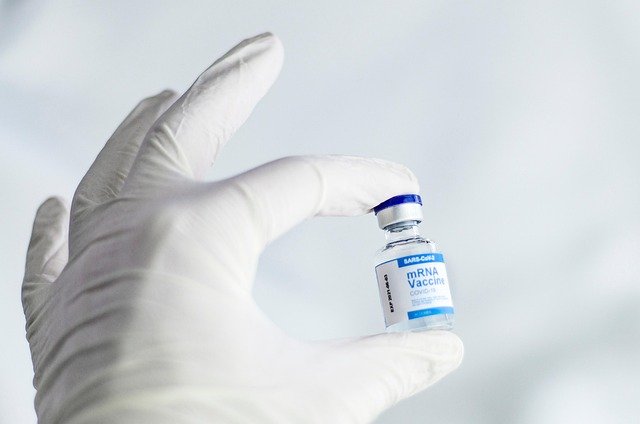5 Early Signs of Hepatitis C You Shouldn’t Ignore
Hepatitis C is often called a “silent threat” because it can live in the body for years without obvious symptoms. This long period of dormancy can make it especially dangerous, as the virus may slowly damage the liver without raising any immediate red flags. Over time, this can lead to serious liver conditions, including cirrhosis and even cancer. Millions of individuals may be carrying hepatitis C unknowingly, which highlights the importance of recognizing the subtle symptoms that might otherwise be dismissed or mistaken for other health issues.

What is unexplained fatigue and how does it relate to hepatitis C?
Unexplained fatigue is one of the most common early signs of hepatitis C. This isn’t just feeling tired after a long day or not getting enough sleep. It’s a persistent, overwhelming exhaustion that doesn’t improve with rest. People with hepatitis C often describe feeling drained of energy, even after a full night’s sleep. This fatigue can interfere with daily activities and quality of life. The liver plays a crucial role in energy metabolism, and when it’s under attack from the hepatitis C virus, it can’t function optimally, leading to this pervasive tiredness.
How can joint or muscle pain indicate hepatitis C infection?
Joint or muscle pain, also known as arthralgia or myalgia, is another early sign of hepatitis C that’s often overlooked. The pain can be mild to moderate and may affect multiple joints or muscle groups. It’s not uncommon for people to mistake this symptom for age-related aches or the result of physical activity. However, when hepatitis C is present, the pain is often more widespread and persistent. The exact mechanism isn’t fully understood, but it’s believed that the immune system’s response to the virus can cause inflammation throughout the body, leading to these aches and pains.
Why should you pay attention to dark urine or pale stools?
Changes in the color of urine or stool can be indicative of liver problems, including hepatitis C. Dark urine, often described as tea-colored or cola-colored, can signify that the liver isn’t properly processing bilirubin, a yellowish pigment produced when old red blood cells break down. Similarly, pale or clay-colored stools may occur when the liver isn’t producing enough bile, which gives stool its characteristic brown color. These changes in bodily waste can be subtle at first but shouldn’t be ignored, especially if they persist for more than a few days.
What does mild abdominal discomfort suggest about hepatitis C?
Mild abdominal discomfort, particularly in the upper right quadrant of the abdomen where the liver is located, can be an early sign of hepatitis C. This discomfort may feel like a dull ache or a sensation of fullness. It’s often mild enough that people might attribute it to indigestion or overeating. However, persistent discomfort in this area could indicate liver inflammation or enlargement due to hepatitis C. While not all people with hepatitis C experience this symptom, those who do should take it seriously, especially if it’s accompanied by other signs on this list.
How do itchy skin or skin changes relate to hepatitis C infection?
Itchy skin, or pruritus, and other skin changes can be surprising early indicators of hepatitis C. The itchiness is often generalized, meaning it occurs all over the body rather than in one specific area. It may be particularly noticeable on the palms of the hands and soles of the feet. In some cases, people may also notice skin rashes or unusual bruising. These skin manifestations occur because the liver plays a crucial role in processing toxins and producing proteins necessary for healthy skin. When the liver is compromised by hepatitis C, these functions can be impaired, leading to various skin issues.
What treatment options are available for hepatitis C in the United States?
Hepatitis C treatment has made significant advances in recent years, particularly in the United States. The standard of care now involves direct-acting antivirals (DAAs), which are highly effective and have fewer side effects compared to older treatments. These medications can cure over 95% of hepatitis C cases in 8-12 weeks for most people. The specific treatment regimen depends on the genotype of the virus, the extent of liver damage, and other individual factors. It’s important to note that while treatment is highly effective, it can be expensive. However, many insurance plans now cover these medications, and patient assistance programs are available to help with costs.
| Treatment Option | Duration | Cure Rate | Typical Cost Range (Before Insurance) |
|---|---|---|---|
| Epclusa | 12 weeks | 95-99% | $24,000 - $26,000 |
| Mavyret | 8-16 weeks | 95-100% | $26,000 - $39,000 |
| Harvoni | 8-12 weeks | 94-99% | $63,000 - $94,500 |
| Vosevi | 12 weeks | 96-97% | $74,760 |
Prices, rates, or cost estimates mentioned in this article are based on the latest available information but may change over time. Independent research is advised before making financial decisions.
Early detection and treatment of hepatitis C are crucial for preventing long-term liver damage and improving overall health outcomes. While these five signs – unexplained fatigue, joint or muscle pain, dark urine or pale stools, mild abdominal discomfort, and itchy skin or skin changes – can be indicative of hepatitis C, it’s important to remember that they can also be caused by other conditions. If you experience any of these symptoms persistently, especially if you’re in a high-risk group for hepatitis C, it’s essential to consult with a healthcare provider for proper evaluation and testing.
This article is for informational purposes only and should not be considered medical advice. Please consult a qualified healthcare professional for personalized guidance and treatment.




